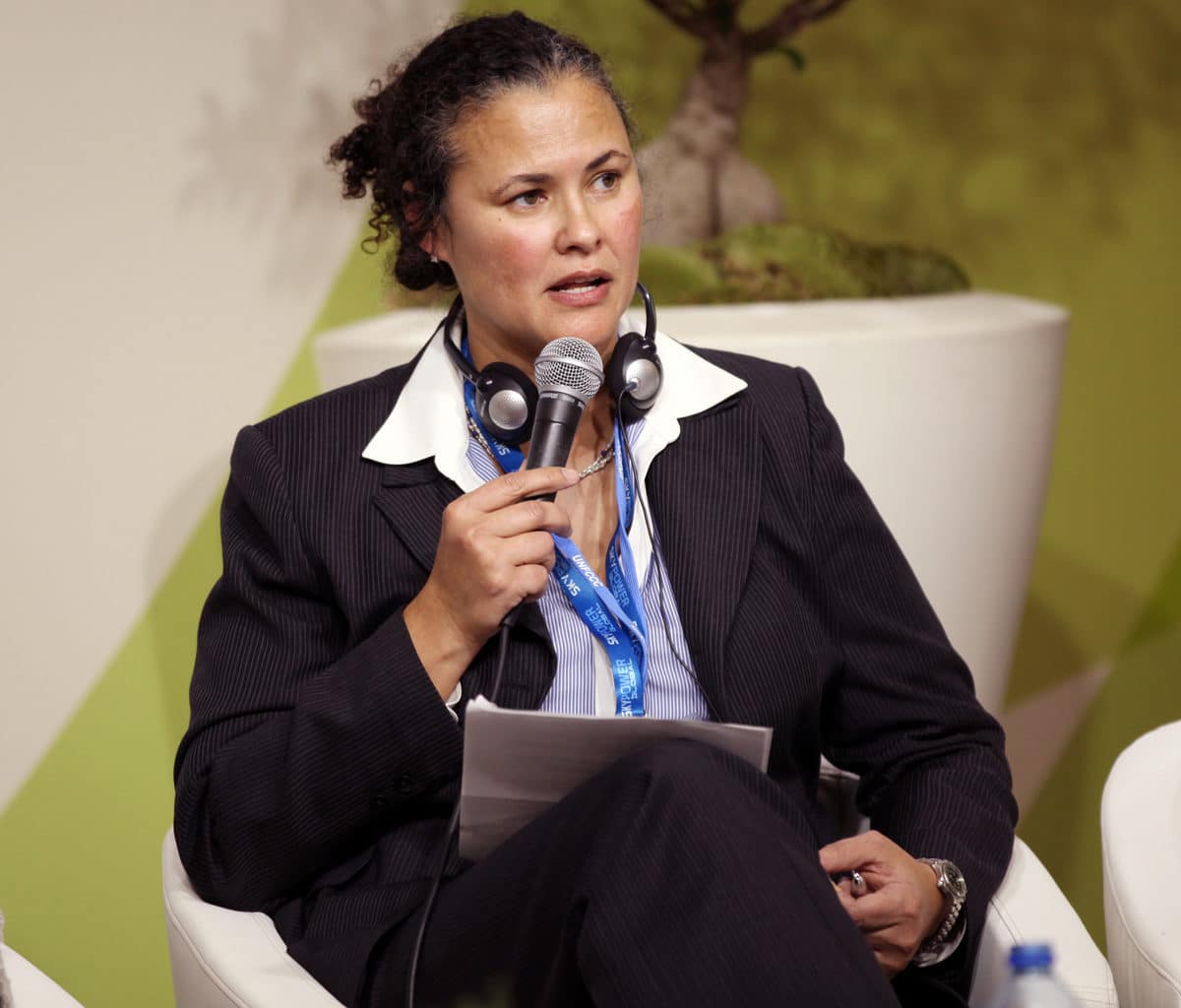As solar industry professionals, we’re all familiar with the 50 state markets that we deal with. What are the politicians thinking? Is there a new Governor coming in? What is the business environment going to look like in six? nine? twenty-four months? And how much should we invest in our operations in these complex states?
In 35X25: A Vision for Energy Storage the Energy Storage Association (ESA) has mapped out where they believe the energy storage market is going, how we’re going to monetize the various applications of energy storage, how different regions are making their push – and most importantly – what further work we have to do to make this vision happen.
On that note, Energy Storage Association CEO Kelly Speakes-Backman, took time to talk with pv magazine while in Boston at the ESA’s 28th Energy Storage Conference & Expo.
pv magazine: How does an organization like the ESA manage to coordinate movement across 50 states?
Kelly Speakes-Backman: First, we look at 50 states and we prioritize, by going through a two-level analysis. We’re small, but mighty! And the two-level analysis tells us which of the 50 states to focus on.
The first level is quantitative – and that’s part of what we did in our 35X25 Vision research. Where are the biggest growths in storage going to happen?
Of course, the largest growth areas are no surprise to anyone: California and Hawaii, really the whole western region. Followed next by the Northeast, then the Midwest and Southwest. We expect even the Southeast to get going due to FERC Order No. 841 requirements.
The second level of analysis is qualitative. We look at the political landscape, we poll our members, we poll legislators and we watch the regulatory proceedings that we think will help open markets.
pv magazine: What states are you currently focusing on?
Speakes-Backman: Right now, our focus is in states like Minnesota, Colorado, Maryland, Connecticut and New Jersey. And it’s not to say that we’re not participating elsewhere, were just not leading the charge in those states – states like California, Massachusetts and New York – states that are already on a great path.
In these markets we have great representation – the California Energy Storage Alliance is really on top of it. The commission and the ISO in the state really gets it. NYBest is a terrific group that we partner with.
We support these states – but otherwise they’ve got it going on.
pv magazine: Are there any key legislative structures that you think most drive energy storage?
Speakes-Backman: We think that growth within states, from a legislative perspective, is all based on defensible and credible targets. The key is setting a target that is backed by a study – and there have been a number of states that have done studies that led to smart targets. Like New Jersey and their 600 MW target that was able to get the backing of the Public Utilities Commission, which in turn, drives the legislatures as they take cues from policies set by the PUC.
By setting these targets, backed by studies and supported by the various level of bureaucracy, we’re telling industry that there is a long term path for you to develop your business.
pv magazine: Do you see a difference in how people are reacting to the roll out of energy storage vs. solar power?
Speakes-Backman: As one of the first 50 people at SunEdison, I’ve seen the evolution – and there are a remarkable number of similarities in the growth of storage as compared to solar.
There are also some differences. First off – storage is so much more complex in the number of values it brings to the grid. Not just energy – but capacity, ancillary, transmission and distribution deferral servers, and that’s before we consider the added reliability and resilience.
Once solar power started to get some of these commercial templates in place, like the power purchase agreement, it took off. Energy storage might not have the same financial barriers, but instead it has regulatory barriers. When the rules were made storage didn’t exist.
Often we hear that storage is a disruptive technology – we think it’s an enabler. All of these other disruptive technologies are in the market already – wind, solar, demand response – and we see that storage enables them to grow further. We think storage is a pretty critical central hub.
At this point Speakes-Backman was called to join another interview – as her schedule was booked for three days straight. And that booked schedule was a great representation of the conference – back to back panels with information and experience packed discussions, and visitors hungry for knowledge of how energy storage will roll out.
This content is protected by copyright and may not be reused. If you want to cooperate with us and would like to reuse some of our content, please contact: editors@pv-magazine.com.








By submitting this form you agree to pv magazine using your data for the purposes of publishing your comment.
Your personal data will only be disclosed or otherwise transmitted to third parties for the purposes of spam filtering or if this is necessary for technical maintenance of the website. Any other transfer to third parties will not take place unless this is justified on the basis of applicable data protection regulations or if pv magazine is legally obliged to do so.
You may revoke this consent at any time with effect for the future, in which case your personal data will be deleted immediately. Otherwise, your data will be deleted if pv magazine has processed your request or the purpose of data storage is fulfilled.
Further information on data privacy can be found in our Data Protection Policy.